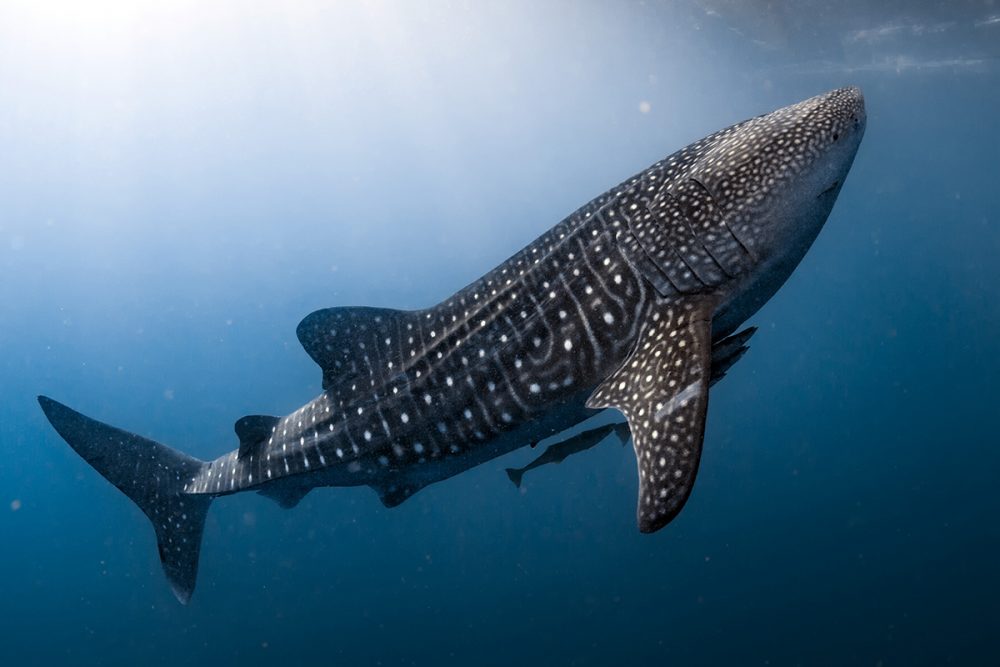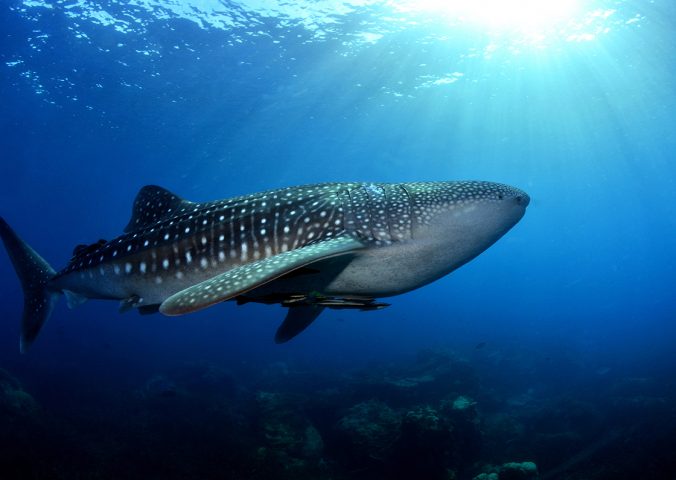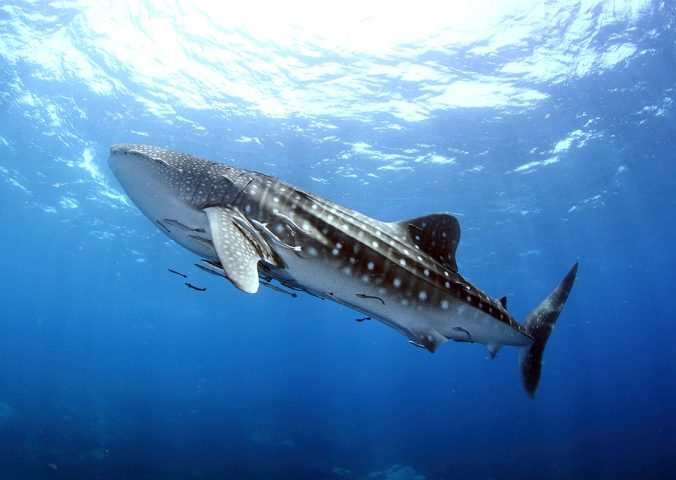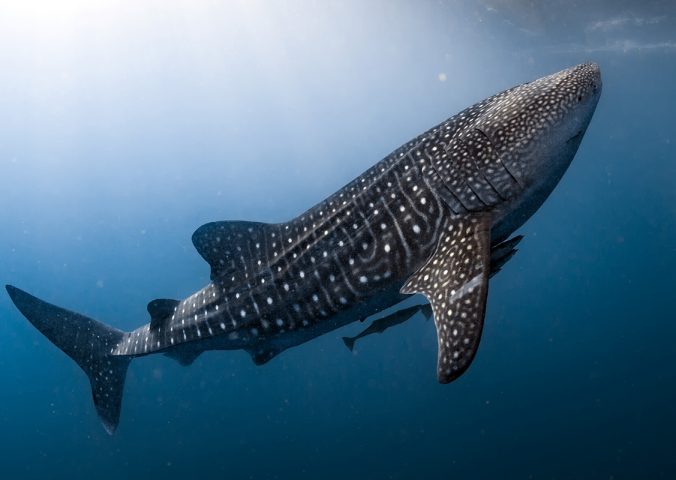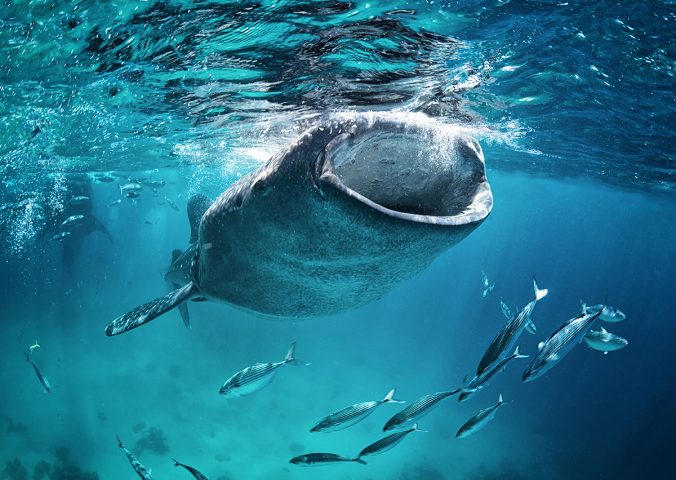About
The whale shark is the worlds largest living shark and the largest living fish in the sea. The largest individual recorded was 20m in length and weighed 42 tonnes! This charismatic gentle giant attracts researchers and divers alike.
Whale sharks are filter feeders, using their huge gaping mouth to sieve sea water for prey, such as small fishes and crustaceans. Surprisingly, whale sharks have rows of tiny teeth inside their mouth, the function of which is still a mystery to scientists! Despite being a relatively well studied species, we know little about their reproductive biology.
Reproduction is through aplacental viviparity: embryos are supplied with nutrients from the yolk and stay within the mothers body until ready to hatch, but birthing sites are still unknown. Pregnant females are occasionally encountered but only a single pregnant female has ever been examined. She was found to be carrying 304 pups in different stages of development, all sired by the same male, suggesting female whale sharks have the ability to store sperm. This is thought to be the largest litter size of any shark!
Despite their size, whale sharks are vulnerable to overexploitation with data suggesting a 63% decline in the Indo-Pacific over the last 75 years. Although listed on Appendix II of CITES and protected across much of their range, they are still targeted by illegal, Unregulated and Unreported (IUU) fisheries for their fins, oil and meat. They are also susceptible to being hit by vessels in shipping lanes which can cause fatalities.
- Order: Orectolobiformes
- Family: Rhincodontidae
- Population: 119,000 – 238,000
- Trend: decreasing
- Size: up to 20m (?)
- Weight: Up to 42 tonnes
- Depth Range (m): Coastal and pelagic
EDGE Score
Distribution
Whale sharks are found across the globe in tropical and temperate waters, with the exception of the Mediterranean. Two sub-populations have been identified: One in the Atlantic and one in the Indo-Pacific. Research suggests 75% of the global whale shark population can be found in the Indo-Pacific, with the remaining 25% in the Atlantic Ocean. Although individuals are highly mobile, certain aggregation sites are known to attract hundreds to thousands of individuals at one time.
Habitat and Ecology
Whale sharks are found in coastal and pelagic habitats. Sightings mostly occur in warm waters, between 26.5oC and 30oC. The majority of these sightings are at known aggregation sites where sharks gather together to exploit a rich food source, such as zooplankton or fish spawning. They are active sharks, with tagging data showing average daily movements of 24-28km; however, many of them show site fidelity. Whale sharks also show sex and size segregation, with mostly young male sharks found in coastal feeding areas. This explains why there is so little information on females and reproduction. They spend most of their time in the epipelagic zone (surface of the ocean), but there is evidence that they dive to at least 1928m!
